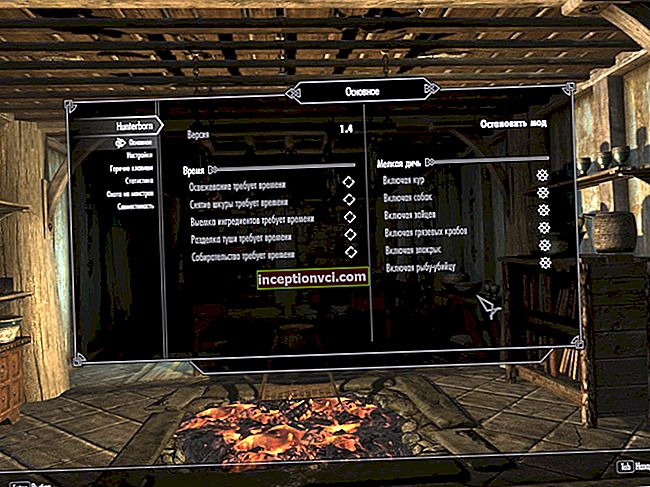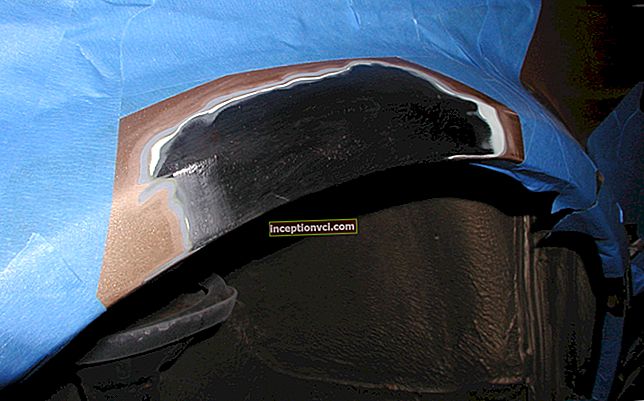You've probably watched the stereotyped action movies in which the main character sneaks into the enemy's lair and downloads unthinkable amounts of information to his flash drive in a matter of seconds. In our test, we do not promise to introduce you to such fantastic devices, but we will tell you about fairly fast drives designed to replace the hard drives we are used to - SSD.
List of tested equipment:
ADATA S592 128GB
ADATA S596 128GB
Corsair Nova V128 128 GB
Intel X25-MG2 160 GB
Intel Х25-М G2 160 GB х2 RAID О
Kingston ssdNOW V + 128 GB
Kingston ssdNOW f + 532 GB
Test stand:
Processor: AMD Phenom IIX61090G 3.2 GHz
Motherboard: ASUS М4А89GTD Pro
Memory: Kingston DDR3-1333 KVR1333D3N9 4 GB
Video card: Sapphire Radeon HD 5870 1 GB
Hard drive 1 GB HITACHI
PSU: ATX ENHANCE 600 W
Operating system: Windows 7 Home Premium
A reasonable comparison
As soon as a new device is born from silicon, germanium, PCB and copper, as the inquisitive minds of technomaniacs begin to torment questions about what new manufacturers can offer us in their product? A solid-state drive is not just an improved version of a hard drive, but a fundamentally new solution that has to solve the problem of storing, reading and writing information. It is not hard to guess that the direct competitor of the SSD is exactly the HDD, so let's consider the advantages and disadvantages of both. For starters, an SSD has no moving parts, while a hard drive is quite noisy. From the above, it follows that the power consumption and thermal package of an SSD is much lower. Basically, an SSD is a set of memory chips that are controlled by a controller. The access time to an arbitrary cell in an SSD is always the same, so the read and write speed does not depend on fragmentation. I must say that there is one caveat, but more on that later. Hard disks, in turn, are delivered at speeds if you do not defragment, since files and their parts are chaotically scattered across different areas of the disk, and the magnetic head has to spend a lot of time moving, searching and reading data. One cannot ignore the fact that solid state drives are much more resilient to physical stress than hard drives. This advantage makes the choice of SSD as a laptop drive more reasonable. Perhaps the only and main disadvantage of solid state drives is their high price. This is due to the high cost of manufacturing flash memory chips and a large number of defects.
Technology and TRIM
Solid state drives for personal computers are built on nonvolatile memory with multilevel cells. Memory with single-level cells is more expensive and is unlikely to find use in home computers soon, so let's consider the principle of operation of memory on multi-level cells. A cell with several levels can store up to four bits of information. For efficient use of cells, they are combined into 4 KB pages, 128 pages are a 512 KB block, and 1024 combined blocks are an array with a total size of 512 MB. An important feature of the drive's operation is that the minimum size of the volume occupied by a single write is 4 KB (page), and only 512 KB (block) can be completely erased. Therefore, the controller groups and transfers data to free entire blocks and writes new information to these blocks. By the way, about the recording process, one feature can also be identified in it: the controller spends more time writing information to a non-zero cell than writing to an empty cell, since the operation of erasing the cell is added. These operations take a considerable amount of time, which affects the performance of the SSD. This effect is especially pronounced when the disk is more than 75% full, since the release of blocks becomes more difficult. But it's not all bad, dear friend.To our delight, smart people came up with a wonderful team, whose name is TRIM. This command is sent by the operating system to the disk when files are deleted from it, in order to immediately zero cells and free new blocks for writing. Thus, we almost do not lose in performance. But still, the ideal condition for an SSD to work is considered to be less than 75% fullness of the drive.
History and perspectives
Man is made like this. that innovations are interesting to him, but he treats them with distrust. Habit has a huge impact: remember when SSDs just started to hit stores and how many articles there were about write cycle limits? The forums were full of controversy for and against the technology. If you want to buy a solid state drive and experience a real increase in speed, but still doubt, then we will resolve your doubts - buy! Today, flash memory is used in almost everything from electronic clocks to supercomputers. SSDs have come a long way since 1978 before showing off in all their glory. This year, StorageTek developed the world's first RAM-based solid state drive. This was the first step in the creation of silent, but still volatile storage. For a long period of time, the SSD did not undergo much change until in 1995 M-Systems introduced a solid state drive based on flash memory. The foundation was laid, it remained to wait for the development of technologies in order to reduce the production process, as well as the invention of new and fast controllers. And in 2008, Mtron Storage Technology managed to conquer read / write speeds of 260 MB / s and 240 MB / s, respectively. Soon, the attention of SSD owners focused on the performance drop when the disk was almost full. Why this happens, we have already described above. As you know, problems are solved as they come. The solution was not long in coming - TRIM. In fact, the architecture of controllers for SSDs was similar until SandForce introduced its product. The maximum storage capacity on such a controller will be 512 GB, and information is exchanged via the Serial ATA 3.0 interface. The SandForce solution uses a new technology called DuraClass. To increase the life of the drive, the optimization of the number of write cycles is used and new algorithms are used to evenly distribute the load across the flash memory blocks. According to SandForce engineers, the drive's lifespan should be more than 80 times longer! The reliability of the disk was also taken into account - a special control system for reading and programming protects against erroneous rewriting of cells. DuraClass also includes ECC and RAISE (Redundant Array of Independent Silicon Elements) error detection and correction tools. The RAISE technology is borrowed from RAID systems, it distributes information across NAND chips, thereby increasing disk fault tolerance.
Testing methodology
To test the drives, we used popular programs such as CrystalDiskMark 2.2 and PCMark Vantage. In PCMark, only the disk subsystem benchmark was used. The CrystalDiskMark 2.2 benchmark tested consistent and chaotic read / write speeds. All tests were carried out in two modes: in a clean state of the disk and in a 80% full state, in order to bring the benches closer to real operating conditions.
conclusions
Of the seven tested drives, the pair of Intel X25-M G2s in the RAID 0 array is by a wide margin. Then A-DATA S596 and Kingston ssdNOW V + follow, in all respects they share the second place in general. The Corsair Nova V128 disappointed a little with its speed performance. And Intel X25-M G2 has its own strong point - working with small files. Having correctly assessed your needs and functional features of each disc, you can choose the right product for yourself. Our preferences are as follows: "Editors' Choice" goes to Intel X-25M G2. and the best buy is Kingston ssdNOW V +. If you look at the SSD market in general, the progress is obvious. New controllers appear, the technical process decreases, the volume and speed increase, only the price decreases extremely slowly.Let's hope for the best: that soon solid-state drives will become more affordable, more reliable and larger in volume, in order to finally replace the hard drives that are boring to us.

ADATA S592
High speed indicators give reason to recommend the device for use both in stationary computers as the main drive for installing the system, and in laptops, for a full replacement of the hard drive. The drive, packed in a plastic insert, is shipped in a regular cardboard box. Inside there is nothing but instructions - this is the gentleman's set of an average SSD. Externally, the solid-state drive also has nothing outstanding, the body of the device is made of metal, which is covered with plastic on top. The ADATA S592 is built on an Indilinx controller and supports TRIM commands.
Everything is good, but the price of the ADATA S592 is too high, and there are solutions on the market with similar performance, but they are much cheaper.
Characteristics:
Read speed: up to 250 MB / s
Write speed: up to 170 MB / s
Interface: SATA II
Cache: 64 MB
Volume: 128 GB

ADATA S596
To begin with, this disc differs from other competitors by the presence of a USB connector. This feature, of course, pleases, but it would be unwise to use the ADATA S596 as an external drive. Therefore, we didn’t even start testing it in this mode, since the read / write speeds will be limited by the bandwidth of the USB 2.0 interface. The JMicron JMF612 controller manages 128 GB of memory, coupled with 128 MB of cache. It is good news that the device supports the TRIM command. The ADATA S596 drive occupies an advantageous position in the market, its performance does not pretend to be a super-fast SSD, but it confidently keeps just above the middle. The price of the device is acceptable for this class, and if you compare it with the ADATA S592, then for less money you can get a similar, and in some cases even higher speed and, as a bonus, a USB connector.
The ADATA S596 has almost no drawbacks, except for the typical drawback for all SSDs - the price.
Characteristics:
Read speed: up to 250 MB / s
Write speed: up to 180 MB / s
Interface: SATA II, USB 2.0
Cache: 128 MB
Volume: 128 GB

Corsair Nova V128
The Corsair Nova V128 is a fast and efficient model based on the Indilinx Barefoot controller. The reasonable price makes the choice of this drive justified. It shows high performance in linear reading speeds of PCMark Vantage, where our hero pleased with "parrots". The Corsair V128 excelled in the Windows Media Center test. Also, let's write down the presence of a 3.5 "adapter slide. Although this is a trifle, it's nice, since not all cases have a special seat for SSD. Let's not forget about such an important nuance as the device's support for the TRIM command.
The big disadvantage is the write speed of 4 KB blocks. This situation greatly spoils the good impression of the Corsair Nova V128. The write speed of 512 KB blocks also dropped when the disk was 80% full.
Specifications: Read speed: up to 270 MB / s
Write speed: up to 195 MB / s
Interface: SATA II
Cache: 64 MB
Volume: 128 GB

Intel X25-M G2
Intel's legendary drive is the only 160GB drive in our test. The SSD comes in a large cardboard box, so it looks like the manufacturer has put something interesting in there. But there is only a 3.5 "adapter, a disk with software and a sticker. Externally, the drive differs from other disks in that the case is made entirely of metal.
The strength of Intel X25-M is its work with small amounts of information. Intel also pleased with a special application for optimizing disk performance called SSD Toolbox.
The weak point of Intel X25-M was the linear write speed. Of all the SSDs tested, Intel is in last place for this parameter.
Characteristics:
Reading speed: up to 250 MB / s
Write speed: up to 70 MB / s
Interface: SATA II
Cache: 32 MB
Volume: 160 GB

Intel X25-M G2 X2 RAID o
It's time to talk about serious speeds, because RAID 0 of two SSDs is no joke. What are the advantages and what do we gain by collecting the array? Almost a twofold increase in linear read / write speeds.
The unjustification of this decision is obvious in everyday life.The volume of 320 GB is small by today's standards for storing information, and such speeds are not needed to play multimedia content. Reliability is the last issue for RAID 0. The speeds that we got by assembling this configuration will hardly be fully felt, except that the numbers in the synthetic tests will please with their magnitude. By the way, the speed of work with 4 KB blocks has hardly increased. In general, it turned out pretty quickly, but expensive and unreliable.
Characteristics:
Read speed: up to 250 MB / s
Write speed: up to 70 MB / s
Interface: SATA II
Cache: 32 MB
Volume: 160 GB

Kingston ssdNOW V +
The first thing to look out for in a Kingston drive is the packaging. In a large box, in addition to the drive itself, you can find the necessary cables for connection, namely: a SATA interface cable and a Molex-to-SATA power adapter. It is also a nice addition in the form of a case, into which you can install a 2.5 "drive, and then connect it to a computer via USB. Very convenient: if you decide to replace the HDD with an SSD in a laptop, then the old screw can be used as an external drive. read / write speeds confidently keep the middle, and in some moments even higher. Performance when working with small amounts of information is an order of magnitude higher than that of other SSDs from our test, but it does not reach Intel X25-M G2.
The disadvantages include the lack of a 3.5 "adapter in the bundle and not particularly high, and in some places sagging PCMark Vantage test results. But let's not forget that these are just synthetics. •
Characteristics:
Read speed: up to 230 MB / s
Write speed: up to 180 MB / s
Interface: SATA II
Cache: 128 MB
Volume: 128 GB

Kingston ssdNOW V +
It's hard to compete with a 512GB SSD. Such a volume will help to say goodbye to HDD in the system, since half a terabyte for average use is more than enough. Kingston ssdNOW V + 512 GB, like all drives from this series, has two delivery options. The first one was already described for the 128 GB model, and the second option is just a disk in a box. The speed indicators are almost identical with the Kingston ssdNOW V + 128 GB, except for the write speed of 4 KB blocks - they are lower for the 512 GB model. Also, the drive is not devoid of TRIM support, which is important with such volumes.
The main disadvantage of Kingston ssdNOW V + 512 GB is its fantastic price. Even a set of four Kingston ssdNOW V + 128 GB will cost much less. For this money, you can buy a powerful home PC and enjoy life.
Characteristics:
Read speed: up to 230 MB / s
Write speed: up to 180 MB / s
Interface: SATA II
Cache: 128 MB
Volume: 512 GB









